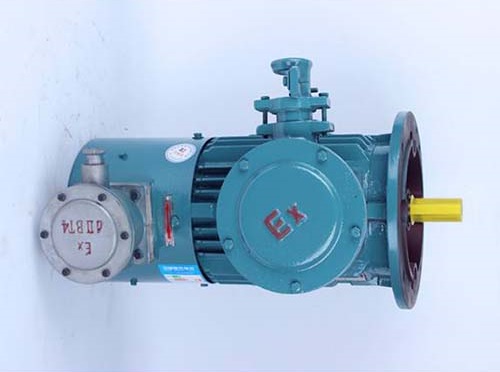Preventive safety requires careful selection of equipment, especially electric motors, in hazardous oil and gas recovery, chemical and petroleum refineries and mining environments. in today's article the ZCL group will describe the classification, certification and characteristics of explosion-proof electric motors.
Electric motors can cause an explosion in one of two ways.
The surface of the motor becomes so hot during operation that it ignites steam, gas or dust.
A single arc caused by a motor fault (e.g. a winding insulation fault or a power supply problem) ignites surrounding materials.
Explosion-proof motors are necessary for industrial applications where highly flammable, prevalent materials are present. Explosion-proof does not mean that the motor will never explode or that it is unaffected by external explosions. Rather, an explosion-proof motor has the function of preventing the internal motor explosion from igniting the larger ambient combustible atmosphere.

Motors that meet UL's Explosion Proof certification can be clearly identified by the UL listed nameplate affixed to the motor housing. This plate defines the motor's rating, zoning and group compliance.
To obtain the certificate and nameplate, the candidate motor must comply with the industry standard for testing UL - 674: Electric motors and generators for use in hazardous (classified) locations.UL certifies different classes and classifications of motors for suitability for specific applications and material exposures.
Class I locations where combustible concentrations of vapours or gases are present. Zoning 1 locations assume the presence of flammable materials during normal equipment operation. The operation of these motors assumes that vapours or gases will penetrate the enclosure, so the primary design consideration is to prevent a single failure - an internal motor failure - from causing a large explosion.
These motors meet the most stringent explosion-proof design criteria: a motor enclosure that can withstand and contain an internal explosion, a flame exhaust path that suppresses flames and allows hot gases to escape the enclosure, and no surfaces that exceed the minimum self-ignition temperature of the expected environment for vapours, gases or dust.
Division 2 locations contain combustible ambient gases or vapours only during equipment failure. During normal operation of the equipment, no gases or vapours will be present.
The Division 2 specification is still stringent, but less so than Division 1, as it requires two concurrent failures - motor and gas supply - to cause an explosion. Specifying a true explosion-proof Zone 1 motor for Zone 2 applications will provide the required safety, but at the cost of over-design.
Class II locations contain combustible dust and ignition prevention is handled differently to Class I. While it is virtually impossible to prevent the ingress of gases into the motor housing, it is easier to prevent the ingress of solid particles.
The privilege of Class II motors is to prevent combustible materials from coming into contact with ignition sources. This means that the motor housing and components must never exceed the expected self-ignition temperature of the dusty material, even if a thick layer of insulation has built up.
Under normal conditions, the Division 1 location contains combustible dust; the Division 2 location will not contain dust unless a fault exists.
For all of the above applications and industries, motor selection is a serious safety consideration. ZCL can help customers make the optimum, economical choice to ensure the correct explosion proof motor for sensitive applications. Please send us a message if you need.
Copyright © ZCL Electric Motor Technology Co., Ltd. All Rights Reserved | Sitemap | Powered by 